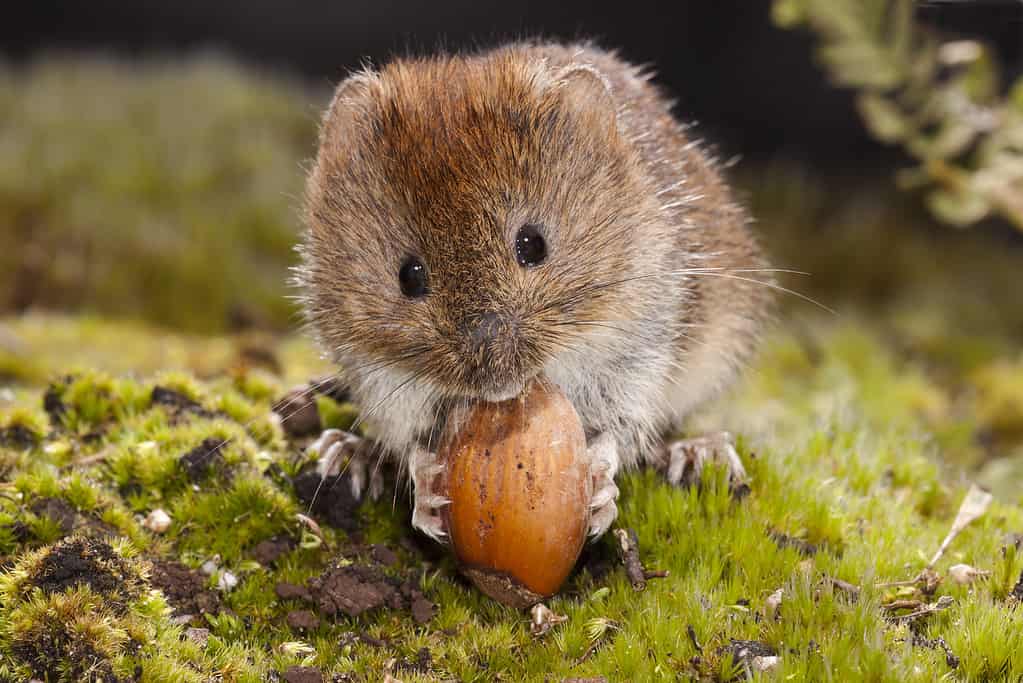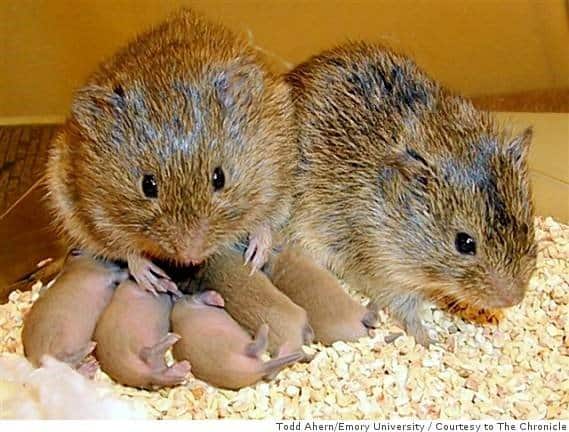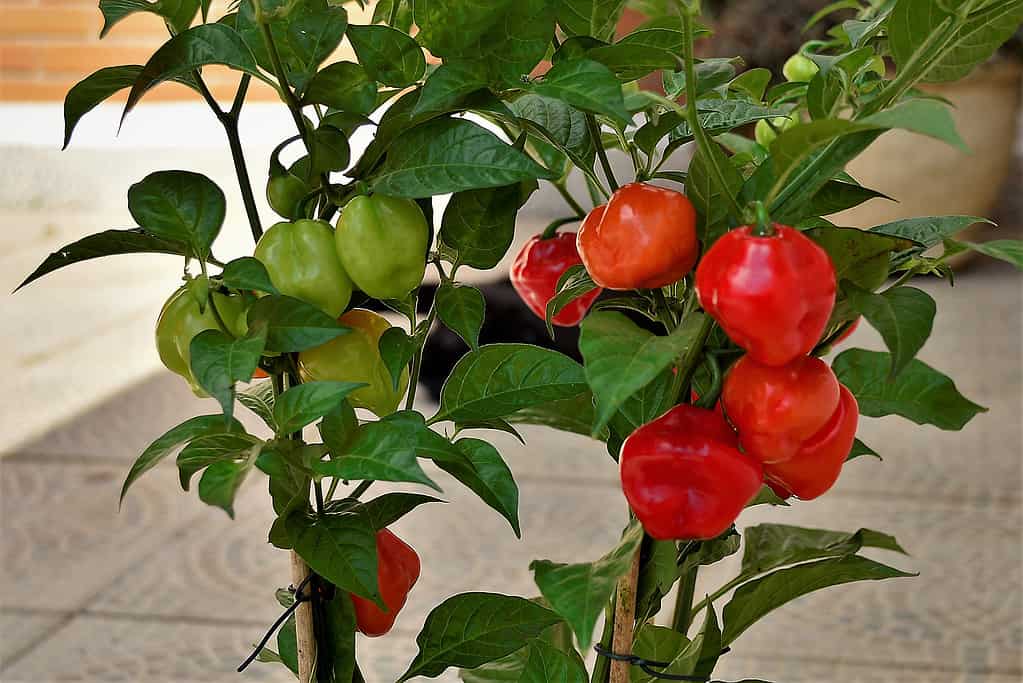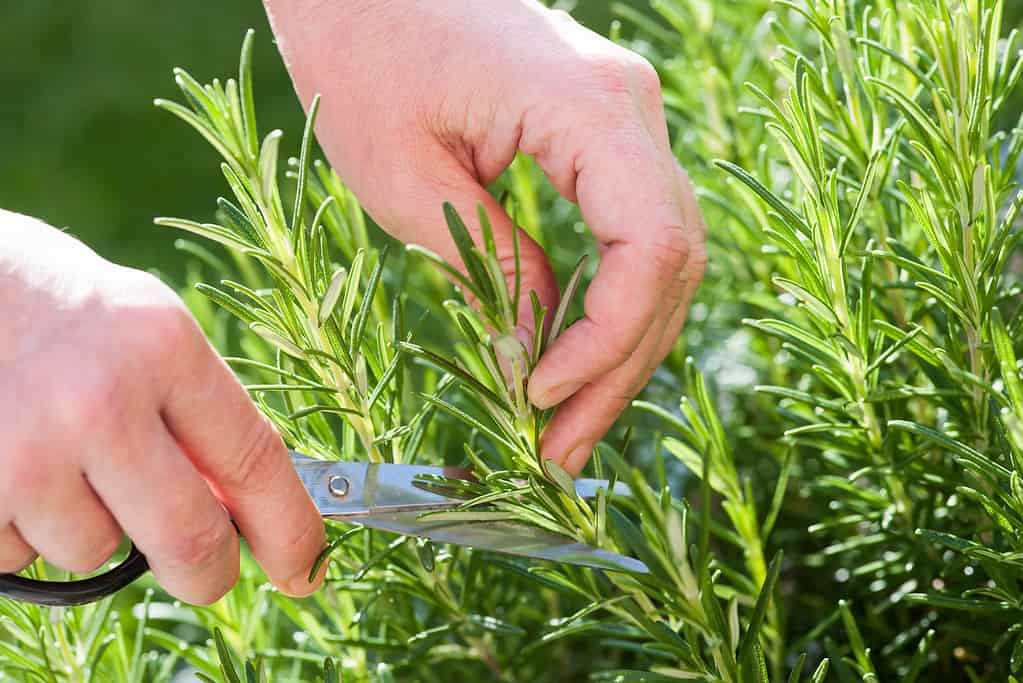With their furry, round bodies and adorable little faces, voles might look innocent, but their voracious appetites for our garden’s bounty tell a different tale. As they nibble on roots and tender shoots, these tiny marauders leave behind a trail of intricate underground tunnels that crisscross our yards and gardens, destroying them as they go. We are left to find a balance between appreciating their undeniable cuteness and safeguarding our flourishing flora from their mischievous deeds. So, how can we discourage their presence without harming them? Continue reading to discover the most effective homemade vole repellent.

With their furry, round bodies and adorable little faces, voles might look innocent, but their voracious appetites for our garden’s bounty tell a different tale.
©iStock.com/AGAMI stock
What is a Vole?
A vole is a small, burrowing rodent that belongs to the family Cricetidae. Voles resemble mice. Meadow mice are field mice are misleading nicknames, for these cheeky crodents. Voles are small, with stocky bodies, short tails, and round faces. Voles are herbivores, They feed on plants, roots, and grasses, making them garden pests. They have prolific breeding habits and can have several litters of pups within a year. While they are intriguing creatures, they can be problematic in agricultural and garden settings, due to their foraging habits and ability to reproduce rapidly.

Voles have prolific breeding habits and can have several litters of pups in a year.
Discover the Most Effective Homemade Vole Repellent: Castor Oil
Castor oil is a common homemade natural vole repellent. Anecdotal evidence suggests castor oil is an effective deterrent for voles. The effectiveness of any vole repellent, including castor oil, depends on factors, like the specific vole population in your area, the application method of the castor oil, and environmental conditions. The key component of castor oil that repels voles is ricinoleic acid. It is a monounsaturated fatty acid found in castor oil. The seeds of the castor bean plant produce castor oil. Ricinoleic acid is non-toxic and has various applications, including medicinal and industrial uses. Ricinoleic acid makes the soil taste and smell unpleasant to voles, causing them to seek food elsewhere.

The seeds of the castor bean plant produce castor oil.
©Alexander Ruiz Acevedo/Shutterstock.com
To make the repellent, mix equal parts castor oil and liquid dish soap. Add 4 ounces (1/2 cup; 113 g) to 1 gallon (3.7 l) of water. Pour the mixture around the base of the plant you wish to protect. Make certain to saturate the soil 2-3 inches (5-7 cm) deep. Vigilance is key. Re-apply the solution weekly when voles are in evidence, and after it rains. Be certain that your castor oil is not an unscented variety. The scent is the property that repels the voles.
Castor Bean
Though you might be tempted to go the full-blown DIY route by growing your own castor beans, don’t. For starters, if the voles are already present, you’re going to wish to act more quickly than growing your own will allow. Second of all, the seeds are highly toxic. The castor bean plant (Ricinus communis), is a large, tropical perennial shrub. In colder climates, Castor bean plants grow as annuals in colder climates.
Castor bean plants are striking, featuring large, palmate leaves with several lobes and vibrant red or green foliage. The castor bean plant produces spiky, globe-like clusters of seeds, each containing highly toxic ricin, which must be handled with caution. While the plant itself is mildly toxic, the seeds are extremely poisonous. Ricin is a highly toxic protein found in the seeds of the castor bean plant. It is considered one of the most poisonous substances known. Even a tiny amount of ricin can be lethal if ingested, inhaled, or injected. Ricin is a potent toxin that can disrupt cellular functions and cause severe illness or death. Therefore, it is essential to take precautions when cultivating or handling this plant. Your pioneer spirit is duly noted and appreciated, but do yourself a favor and buy the castor oil.

While the castor bean plant itself is mildly toxic, the seeds are extremely poisonous.
©iStock.com/NATALIA NOSOVA
Discover the Most Effective Homemade Vole Repellent: Other options
Though castor oil is the preferred method of vole control, there are other strong scents that will rid your garden of voles. Using a mixture containing hot peppers or capsaicin as a vole repellent is another DIY repellent that some gardeners have found effective. Capsaicin is the compound responsible for the heat in hot peppers, and it can create an unpleasant sensation when consumed by animals, including voles.
Chop or blend hot peppers like jalapenos or habaneros. Mix the peppers with water. Allow the mixture to rest (sit) for a few hours at a minimum. Strain the mixture to remove any solid pieces. Add a tablespoon of liquid dish soap, and then, as before, pour the concoction around the base of the plant you wish to protect. Place the mix in a spray bottle. Spray immature shoots and leaves directly with the mix. This double-barrel approach offers twice the protection!
The effectiveness of a hot pepper mixture will vary. Some voles will be more sensitive to capsaicin than others. Reapply the mixture periodically, especially after a rain or watering. Best practice dictates wearing gloves to handle hot peppers, as capsaicin can be irritating to the skin and eyes. Be mindful of the potential for the mixture to affect other wildlife, pets, or humans who come into contact with treated plants.

Using a mixture containing hot peppers, like these habaneros, as a vole repellent is another home remedy that some gardeners have found effective.
©iStock.com/NancyAyumi
Peppermint and Rosemary
Peppermint and rosemary are also commonly used for deterring voles in gardens. Plant these two herbs in the garden. This is referred to as companion planting. Companion planting is the practice of planting plants that will protect other plants from pests, or encourage their growth. Peppermint and rosemary are exceptionally aromatic plants that keep your garden a vole-free zone. If you aren’t presently growing peppermint when the voles come calling, peppermint oil is another option.
Peppermint oil has a strong and pleasant scent for humans. It is, however, unpleasant to rodents, including voles. Mix a few drops of peppermint oil with water and a little dish soap to create a spray. Then, apply it around the areas where voles are active or on plants they tend to target.
Reapply the peppermint oil spray regularly, especially after rain, as the scent can dissipate over time.

Rosemary is an exceptionally aromatic plant that keeps your garden a vole-free zone.
©AlexRaths/ via Getty Images
These natural control methods are safe for the environment, and add pleasant scents to your garden. However, their effectiveness may vary from one situation to another. What works well for one gardener might not work as effectively for another. When dealing with voles, it’s often a good idea to use a combination of deterrent methods. This can include planting vole-resistant plants, using physical barriers like wire mesh around the root zones of plants, and applying natural repellents like peppermint oil or castor oil. By using a variety of strategies, you can increase your chances of successfully protecting your garden or lawn from vole damage.
The photo featured at the top of this post is © iStock.com/AGAMI stock
Thank you for reading! Have some feedback for us? Contact the AZ Animals editorial team.







